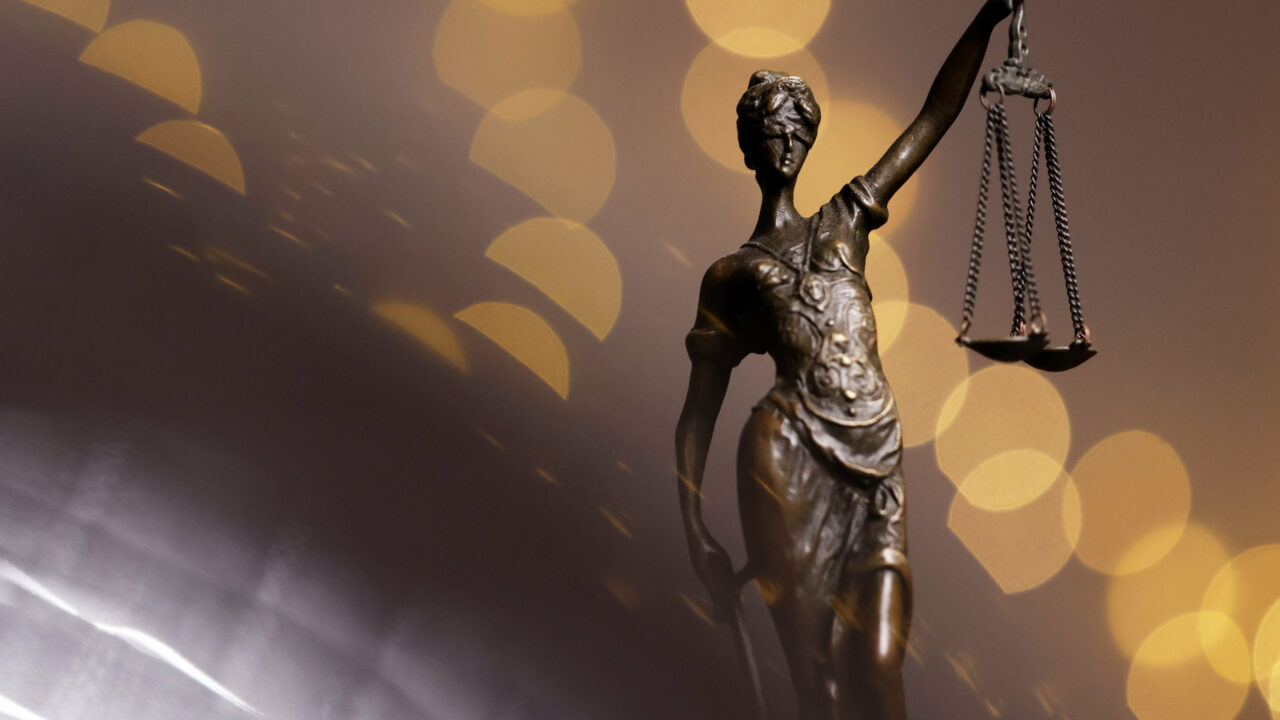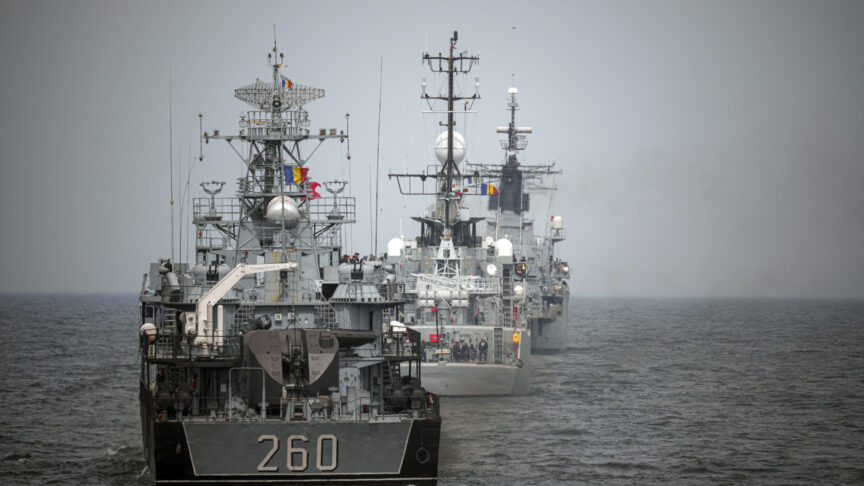You break, you pay: Why the West should start confiscating frozen Russian assets now
Ukraine’s Western allies are discussing the possibility of confiscating frozen Russian sovereign assets to support Ukraine’s reconstruction. But if confiscated during the war, these funds could provide desperately needed – and stable – financial support for Kyiv’s war effort
Despite the West’s unprecedented support to Ukraine since Russia’s full-scale invasion, after two years of war, there are signs of fatigue. Over the last few months, both the United States and the European Union have struggled to approve significant further assistance to Ukraine, prompting discussions in the West about the possibility of confiscating frozen Russian sovereign assets to support Ukraine’s war effort and reconstruction.
The $290 billion of Russian sovereign assets frozen in the West – two-thirds of which is situated in Europe – would make a huge difference in Ukraine both during and after the war, and could provide a stable flow of money as allies find it increasingly difficult to push support through. But a confiscation would also hold a larger political value – showing Ukraine that it has the long-term support of its allies and sending a message that governments engaged in aggressive warfare will not be allowed to profit from actions that clearly flout international law.
There are currently two scenarios under consideration for using the confiscated funds to support Ukraine: as compensation for inflicted damage or to address the country’s military needs. For the first, Ukraine has proposed an international agreement called the Global Compensation Mechanism (GCM), the design of which is being led by the Council of Europe. The agreement would include, among other provisions, rules limiting sovereign immunity concerning Russian state assets and would comprise three components: the register of damages, a fund, and a compensation commission. The register would serve as a record of evidence and claims for damage, loss, or injury incurred by all relevant natural and legal entities. It has already been legitimised by a majority vote in the United Nations General Assembly in November 2022 and in May 2023 the Council of Europe established the register of damages through a partial agreement with 43 participating signatories at present. The compensation fund would be an international trust fund, which Council of Europe member and non-member states would deposit Russian assets into, and which would subsequently disburse these to Ukraine. A separate agreement would establish the compensation commission, which would be tasked with adjudicating and offering compensation for claims submitted through the register.
Following the difficulties in the US and the EU to secure the supplemental package for Ukraine and amid fears that Donald Trump could become the next US president and put an end to US military aid for Ukraine, policymakers are increasingly discussing the second option too as a way to “Trump-proof” Ukraine’s military support. In this case, part of the funds would be used to procure military equipment from the US. To establish a more sustainable approach, the confiscated funds could also be used for the co-production of military items for Ukraine in Europe and the US.
In either of these cases, the funds would make an enormous difference in Ukraine. The Ukrainian government will spend $40 billion on defence in 2024, representing 22 per cent of its total budget – which is less than it spent on defence in 2022 and in 2023. This pales into insignificance compared with Russia’s defence budget, which amounts to $140 billion for 2024 alone. Ukraine received at least €100 billion in military support between February 2022 and October 2023, when its own defence budget was higher than it is now, but the amounts for 2024 are still unclear. If the budgetary discrepancy widens further, it will become increasingly difficult for Ukraine to defend against Russia’s aggression.
If the budgetary discrepancy widens further, it will become increasingly difficult for Ukraine to defend against Russia’s aggression
And this is before considering Ukraine’s longer-term budget needs. This month, the World Bank estimated the costs of Ukraine’s reconstruction and recovery to be $486 billion, up from an estimated $411 billion one year ago. These figures do not account for compensation for injured individuals, nor for the damages to occupied territories. The destruction of now occupied Mariupol – Ukraine’s largest industrial city that contributed 2 per cent to the country’s GDP in 2020 – alone produced damages amounting to $14.5 billion.
The fact that Russia is preparing for a long war in Ukraine means that Kyiv and its partners need a long-term strategy to ensure support for the country. The recent crises in the US and Europe demonstrated the dangers of the current model, whereby funding depends on the electoral cycles, grievances of political parties, and potential leadership changes in the countries that are supporting Ukraine. The Russian assets would be a reliable source of additional funds and could serve as a financial bridge in situations similar to the current one in the US, where delays in the House’s vote have adversely affected Ukraine’s frontline capabilities. The figures above should show, however, that to sustain a long war and fund reconstruction, Ukraine will need continued support from allies alongside the Russian funds. Ukraine’s allies will need to be clear that a confiscation would complement, not replace their own military aid.
Some economists and policymakers have raised concerns abouts the risks of a confiscation. Politicians, for example, often invoke the legal dimension to justify their objections to a confiscation, claiming that it would violate international law and erode the fundamental protection of sovereign assets. However, various groups of international lawyers have proposed options for a legal, lawful, and just confiscation. Their arguments rely on existing international norms about collective self-defence and the countermeasures principle. On 30 January the Parliamentary Assembly of the Council of Europe already approved a draft resolution on the seizure of Russian assets where the aggressor state is said to provide “full compensation for the injury caused by its internationally wrongful acts, including the destruction of infrastructure, loss of life, economic hardship, and other adverse effects”. Some countries, such as the US and Canada already have national legislation that allows for such a confiscation, while other G7 members are in reflection mode. The G7 will meet to discuss a new legal theory developed by the US in late February.
Officials on both sides of the Atlantic, especially in Europe, also fear that a confiscation of Russian sovereign funds would set a precedent which might deter countries from depositing their funds in the US and other G7 countries, so-called de-dollarisation. But de-dollarisation is a long-term trend, which was already taking place before sanctions on Russia and will continue irrespective of the intended confiscation. Despite Russian assets being frozen for two years and ongoing sanctions, there has not been any significant increase in de-dollarisation.
Finally, there are concerns about a retaliation from Moscow. Reports from Russia suggest that the Kremlin has already written off the possibility of getting its money back. However, Moscow has made it clear that it will challenge the confiscation process legally to prevent the funds from being seized. It has also threatened to retaliate and claims it has identified $288 billion of foreign assets in Russia, compounding the fears of some in the West. But, of these, more than half are located in Cyprus and the Netherlands. Although records of foreign direct investment in Russia are hard to come by, experts expect that much of the money entering Russia via these special tax jurisdictions is likely to be re-invested Russian money. The UN Conference on Trade and Development estimates that 6.5 per cent, or $28.9 billion, of the money invested in Russia from the Netherlands, and the majority of that from Cyprus, is ‘round-tripping’ in this way.
It is clear that Russia should be held accountable and punished for its war of aggression on Ukraine. But the reasons for a confiscation go beyond this moral argument. These funds could help Ukraine push back against Russia’s aggression and rebuild and recover – and such an action from the West could dissuade other similarly inclined aggressive states from following Moscow’s suit. When weighing up the risks of a confiscation, one needs to also consider the risks of not confiscating Russian sovereign assets. Former president of the World Bank, Robert Zoellick, has warned that the risks are often overstated and “fail to weigh the strategic benefits in balance”. The risk of not confiscating the assets – that Ukraine runs out of funding – and the consequences of this for the future of international order are clearly far greater than the risks deriving from the confiscation. Preparing a plan B for funding Ukraine’s resilience should be a top priority for the West, even if the US and the EU commit to delivering new financial aid to Ukraine.
The European Council on Foreign Relations does not take collective positions. ECFR publications only represent the views of their individual authors.



